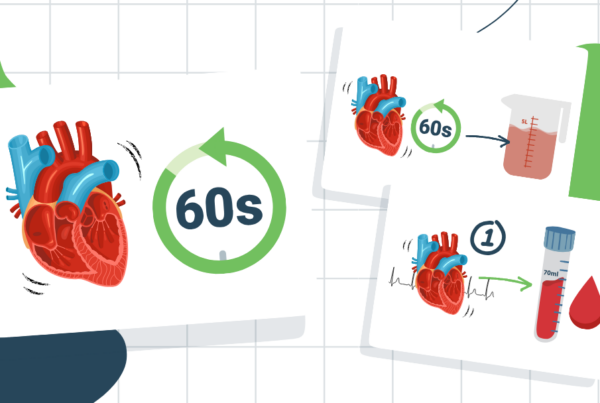By Chris Ebright
Case Presentation
EMS responds to a local convenience store for a 24-year-old male having a seizure. The patient presents lying on the floor supine and convulsing in a tonic-clonic motion. He is unresponsive to verbal commands, and there is blood oozing from his mouth. A friend who accompanied the patient states that both of them had been drinking all day while binge-watching old episodes of Game of Thrones. When they arrived at the carryout to purchase more beer, the patient complained that the lights in the store were bothering his eyes. Almost immediately after saying that, he suddenly collapsed. The friend caught the patient and lowered him slowly down to the floor, where he immediately began shaking. The shaking has been ongoing now for over ten minutes. According to the friend, similar events have occurred this past year since the patient was in a motorcycle accident and hurt his head. Initial vital signs reveal ventilations 30/minute, shallow and gurgling; pulse 112/minute and regular; blood pressure is unobtainable; pulse oximetry 91 percent on room air; blood glucose 134 mg/dL; skin is diaphoretic and warm to the touch.
What is a Seizure?
A seizure is a sudden attack from abnormal electrical discharges within the brain that produces various physical manifestations (convulsions, sensory disturbances, alterations of consciousness).1 There are many types of seizures, which range in severity, and vary by where and how they begin in the brain. Most seizures last from thirty seconds to two minutes but can last much longer. A seizure that lasts longer than five minutes, or a patient having more than one seizure within five minutes without returning to a normal level of consciousness between episodes, is called status epilepticus.2 This rare condition is more common in young children and elderly adults and can lead to permanent brain damage or death.
Seizures are classified into two groups: Generalized seizures and Focal seizures (also known as partial seizures). Generalized seizures are a result of abnormal neuronal activity that rapidly emerges on both sides of the brain, while focal seizures originate in just one part of the brain. Focal seizures are frequently described by the area of the brain in which they originate (frontal lobe, temporal lobe, etc.) and about sixty percent of patients with epilepsy have focal seizures.3 Be aware that not all seizures can be easily defined as either focal or generalized. Some patients have seizures that begin as focal seizures but then spread to the entire brain.
Generalized Seizures
- Absence seizures: Termed also as petit-mal seizures, these often occur in children. It may cause the patient to stare blankly into space and appear to have become temporarily disconnected from reality. These seizures may occur multiple times throughout a day and induce subtle body movements, such as eye-blinking or lip-smacking.
- Tonic seizures: These seizures cause stiffening of the back, arms and legs muscles. They usually last less than twenty seconds and often happen during sleep. However, if a patient is standing up at the time, he or she can lose their balance and fall. This seizure is more common in patients who have a specific type of epilepsy.
- Atonic seizures: They are also called drop seizures and cause a loss of normal muscle tone, which often causes a patient to fall or drop their head involuntarily. This presentation appears similar to a marionette having its strings cut. Because of the risk of falling, patients who tend to have atonic seizures may be wearing a helmet when you arrive on scene.
- Clonic seizures: Characterized by repeated jerking movements of muscles on both sides of the body, usually affecting the neck, face, and arms.
- Tonic-Clonic seizures: Also known as grand-mal seizures, these cause a combination of symptoms; including a sudden loss of consciousness, body stiffening and shaking, and sometimes loss of bladder and/or bowel control. Additionally, the patient may bite their tongue or cheek, and a posterior head injury may be discovered during a physical exam.
- Myoclonic seizures: These usually manifest as sudden, brief jerks or twitches of the arms and legs, as if the patient had been shocked. As an example, he or she may suddenly throw both hands into the air. Typically, there is no loss of consciousness.
Focal Seizures
- Simple focal seizures: A small part of the brain is affected. These seizures may cause twitching of the fingers, arms or legs and make a patient smell, hear, feel or taste something strange. They may also see flashes of light, become acutely nauseous, dizzy or diaphoretic, but do not lose consciousness. The patient may experience sudden and unexplainable feelings of joy, anger, or sadness as well.
- Complex focal seizures: The part of the patient’s brain that controls emotion and memory evokes these type of seizure. Unlike simple focal seizures, the patient will have a change of consciousness or awareness. They may display strange, repetitious behaviors such as eye- blinking, lip-smacking, hand-rubbing, mouth movements (chewing or swallowing), or even continuously walk in a circle. These repetitive movements are called automatisms.
Signs and symptoms of focal seizures may be confused with other neurological disorders, such as migraine, narcolepsy or mental illness. Some patients with focal seizures may experience auras – unusual sensations that warn of an impending seizure. These auras are usually focal seizures without interruption of awareness (e.g., dejà vu).3
Seizure causes and management
The most common cause of seizures is epilepsy, but not every patient who has a seizure has epilepsy. Other causes include: hypoxia; hypoglycemia; renal or liver failure; high fever, which can be associated with an infection such as meningitis; sleep deprivation; specific pain relievers/antidepressants/smoking cessation therapies; head trauma; stroke; brain tumor; abuse of illegal or recreational drugs; alcohol withdrawal or extreme intoxication.4 The physical exam can be helpful to distinguish an actual seizure from other causes of loss of consciousness with convulsions. Specifically, lateral tongue biting and urinary incontinence are more suggestive of an actual seizure than a syncopal event.7 Always follow an organized approach to rule out all possible causes and don’t let past medical history lead you to a premature diagnosis.
It’s crucial to treat seizures symptomatically and protect patients from injuries that may occur during seizure activity.5 If the seizure is post-trauma or fall, the cervical spine and airway should be managed with a chin-lift and jaw-thrust until a cervical collar can be applied. This applies to all patients found at the bottom of the stairs or whenever a fall from height is suspected. Maintain the airway by suctioning, as needed, and turning the patient on his or her side to avoid airway obstruction by the tongue. Patients should be protected from harm by keeping them from sharp objects and possibly falling off an unsafe surface.
A reversible cause should be remedied specific to its etiology, along with basic and advanced interventions to attain and maintain adequate oxygenation, ventilation, and circulation. An infection where the patient can be treated with antibiotics or the hypoglycemic patient that can be administered glucose via an appropriate route are examples. Non-reversible causes, in addition to the initial appropriate care, need to be managed with anticonvulsant drugs such as lorazepam, diazepam, or midazolam via the intramuscular, intravenous or intranasal route. Keep in mind, these drugs don’t cure seizures or epilepsy, but rather work to control these conditions. Regardless, the highest priority is to stop the seizure activity. Respiratory depression is a side effect of benzodiazepines, which can be detected immediately when monitoring waveform capnography. Assist ventilation with a bag-valve mask if respiratory depression occurs, and titrate ventilation rate and tidal volume to maintain an EtCO2 between 35 and 45 mm Hg.6
Case Conclusion
The patient’s airway is suctioned, and a properly-sized nasopharyngeal airway is easily placed in the patient’s right nostril. Oxygen is administered via a non-rebreather mask at an initial rate of fifteen liters per minute to attempt to attain a pulse oximetry level higher than 94 percent. Despite the oxygen, the patient continues to seize, and intravenous access is temporarily unattainable. The decision is made to administer ten milligrams of midazolam by the intramuscular route, as per protocol guidelines. The seizure stops almost instantly following administration, and the patient becomes postictal with a Glasgow Coma Score of seven. Peripheral intravenous access is attained, and blood pressure of 88/50 is auscultated. Fluid boluses of 250 milliliters normal saline are infused to correct the hypovolemia, and the patient is positioned left lateral recumbent on the ambulance cot. The patient is placed in the ambulance for transport, and seven minutes later his GCS score improves to 13, still very lethargic and drowsy. Blood sugar is rechecked, reading 112 mg/dL. He now has a pulse of 102 beats per minute, breathing at 18 times per minute – still tolerating the nasal airway, and has a SpO2 of 97 percent. The remainder of the transport is unremarkable. He is admitted for overnight observation and is released in the morning with no neurological deficits additional to his underlying history.
References
- “seizure.” Merriam-Webster.com. 2019. https://www.merriam-webster.com/dictionary/seizure (5 May 2019).
- Status Epilepticus. (n.d.). Retrieved from https://www.hopkinsmedicine.org/health/conditions-and-diseases/status-epilepticus.
- What are the different kinds of seizures? (n.d.). Retrieved from https://www.ninds.nih.gov/Disorders/Patient-Caregiver-Education/Hope-Through-Research/Epilepsies-and-Seizures-Hope-Through#3109_10.
- Seizures (n.d.) Retrieved from https://www.mayoclinic.org/diseases-conditions/seizure/symptoms-causes/syc-20365711.
- Edgerly, D. (2011, August 2). Patient Presents with a Seizure. Retrieved from https://www.jems.com/articles/2011/08/patient-presents-seizure.html.
- Sullivan, B. (2016, June 13). 3 things paramedics need to know about seizures and respiratory compromise. Retrieved from https://www.ems1.com/capnography/articles/99193048-3-things-paramedics-need-to-know-about-seizures-and-respiratory-compromise/
- Dingle, H.E., Slovis, C. (2017, April 10). Guidelines for Treatment of Prolonged Seizures in Children and Adults. Retrieved from https://www.jems.com/articles/print/volume-42/issue-4/features/guidelines-for-treatment-of-prolonged-seizures-in-children-and-adults.html.
About the Author
Chris Ebright is an Education Coordinator with the National EMS Academy, managing all aspects of initial paramedic education for Acadian Companies, Inc. in the Covington, Louisiana area. He has been a Nationally Registered paramedic for 24 years, providing primary EMS response along with land and air critical care transportation. Chris has educated hundreds of first responders, EMT’s, paramedics, and nurses for 23 years with his trademark whiteboard artistry sessions. Among his former graduates is the first native paramedic from the Cayman Islands. Chris’ passion for education is currently featured as a monthly article contributor, published on the Limmer Education website. He has been a featured presenter at numerous local, state and national EMS conferences over the past 12 years, and enjoys traveling annually throughout the United States meeting EMS professionals from all walks of life. Chris is a self-proclaimed sports, movie and rollercoaster junkie and holds a Bachelor of Education degree from the University of Toledo in Toledo, Ohio. He can be contacted via email at c.ebrightnremtp@gmail.com or through his website www.christopherebright.com

